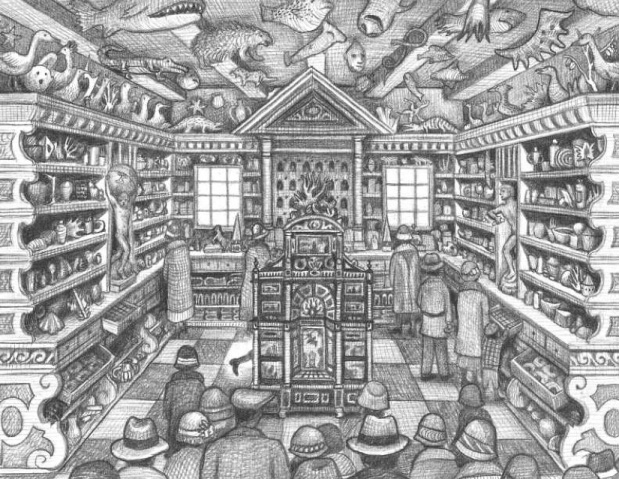'if a picture paints a thousand words...'
Wonderstruck
by Brian Selznick
Selznick's debut book made a huge impact (as the blurb on my Advance Reader's copy is keen to make clear) winning The Caldecott Medal, making it as a finalist in America's National Book Award and earning that all important No. 1 New York Times Bestseller position. I loved it too and we will all soon be able to see the film version as directed by Martin Scorsese (although judging by that trailer I'd give the film a miss and just get a copy of the rather lovely book) but after all that success you always wonder what an author, and illustrator, will do next. Selznick's new book tells two stories; one with words, one with pictures, the two eventually combining as the plots merge. Selznick may have dazzled with his artwork but does he have the prose to match it when the two are placed side by side?
The story begins with pictures, a pair of wolves run towards us, Selznick's 'camera-eye' zooming in up close to their eyes. After those few pages of pictures we are then in Gunflint Lake, Minnesota in the summer of 1977 and the written story of Ben Wilson. He awakes after a recurring dream where he is being chased by wolves. Ben was born deaf in one ear, has never known who his father was, and now lives with his aunt and uncle after the death of his mother. On a stormy night he finds a blue book amongst her possessions, a history of museums entitled Wonderstruck, with a dedication and a bookmark that suddenly provides what he thinks might be clues to his father's identity. This discovery will set him off on a journey of discovery but not before the power of the storm around him alters the way he will experience the world outside.
The pictures then transport us to Hoboken, New Jersey in 1927 and the story of Rose, a deaf girl who lives separated from her film-star mother virtually imprisoned by her strict father. Being deaf we experience the world just as she does through Selznick's black-and-white drawings as she makes her escape to New York City and the American Museum of Natural History.
I have included a couple of examples of Selznick's artwork just to give an idea of his lovely cross-hatched pencil drawings. His technique of zooming in close on facial features and details gives the book a very cinematic feel, something that ties in rather nicely with the era of silent film they evoke. It has to be said that those pictures that do take us in close are much better than the wider shots where the lack of facial detail actually makes Rose look completely different to the girl we know in close-up.
So how well do text and picture marry? Well, Selznick's prose is adequate but never leaves the reader wonderstruck, and although he has worked hard to link the different sections, so that as a door opens in one it can literally open in the other too, there is a curious rhythm to the reading experience as pages fly by in Rose's story and then plod along when we get back to Ben. When their stories merge and pictures and words begin to follow the same narrative the effect is actually to take away from the artwork which becomes merely illustrative of things we are reading about rather than the narrative itself, and this too at a point where the narrative is all about the revealing of past story.
So this book is a bit of a disappointment after Hugo Cabret, an easy-read and even an interesting one, especially after having read Selznick's acknowledgements at the back where he details what he discovered about deaf culture, the advent of talking movies and The American Museum of Natural History amongst other things, but nowhere nearly as impressive as the monochrome magic of his debut. To answer the question raised by the heading of this post; if a picture paints a thousand words then why write words at all?









2 comments:
I think these pencil drawings are beautiful and I'll definitly read the book
Good stuff Matt, I hope you enjoy it.
Post a Comment